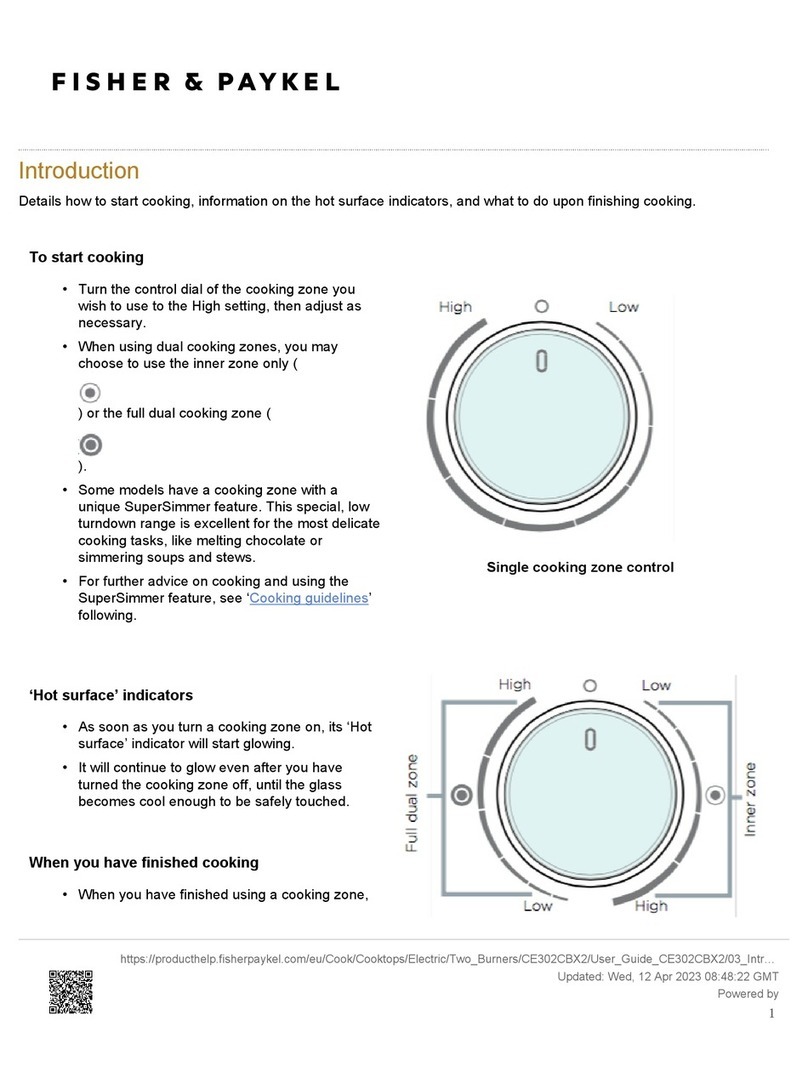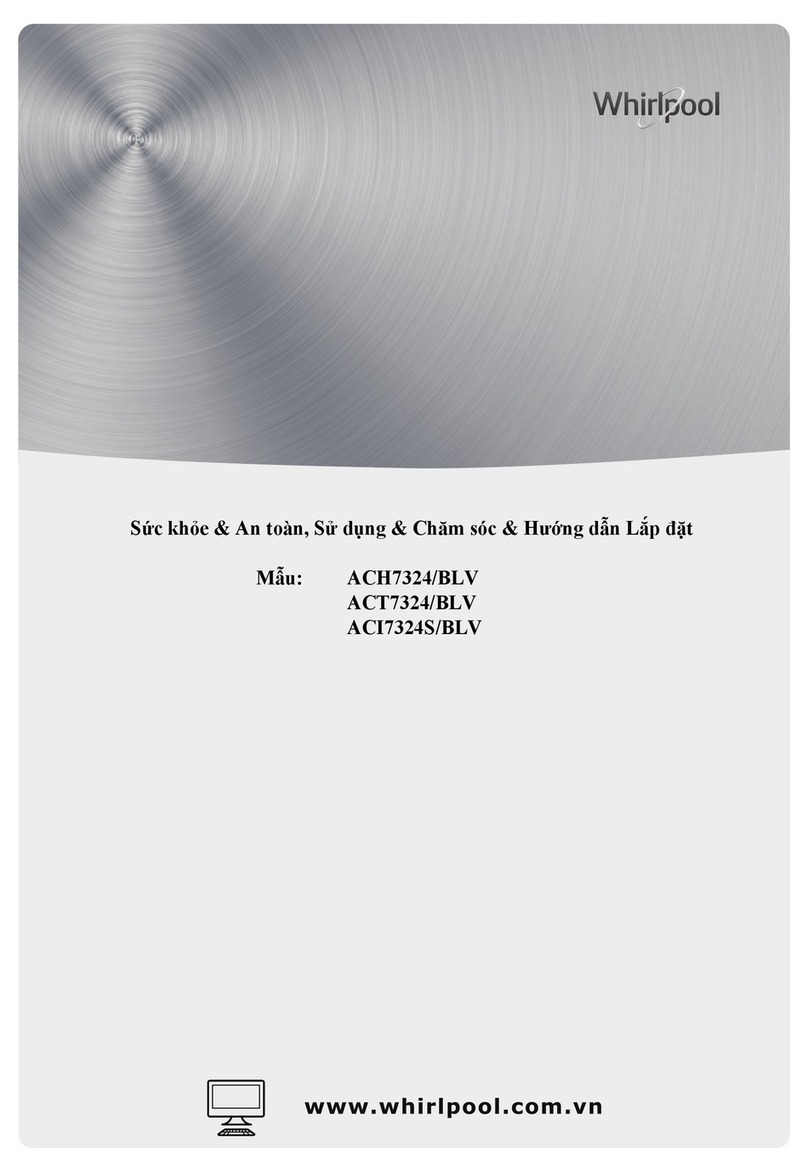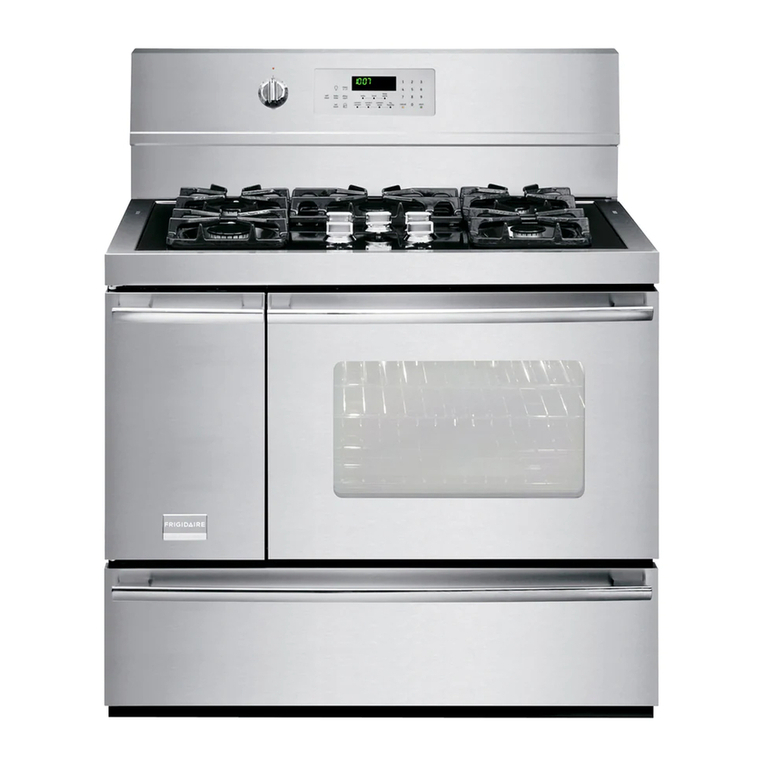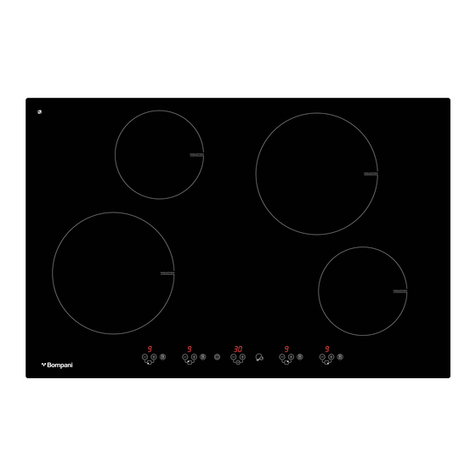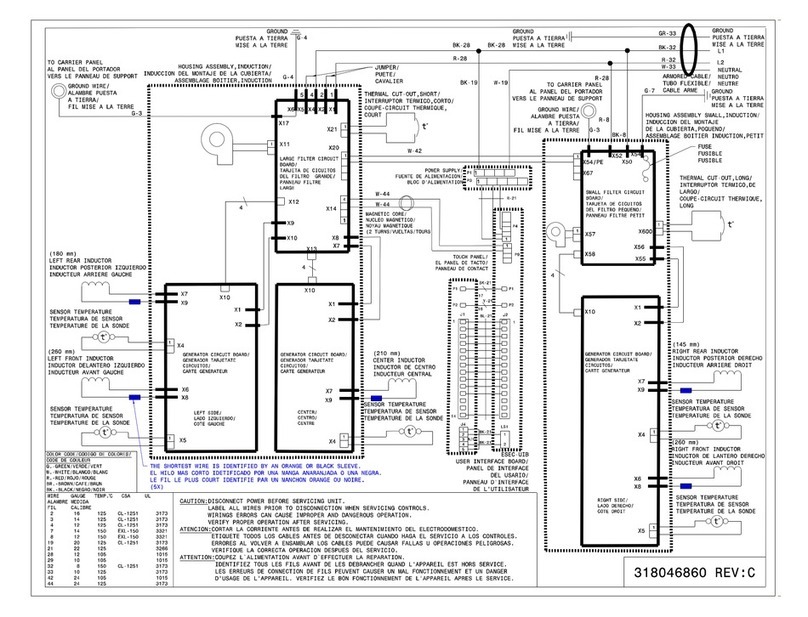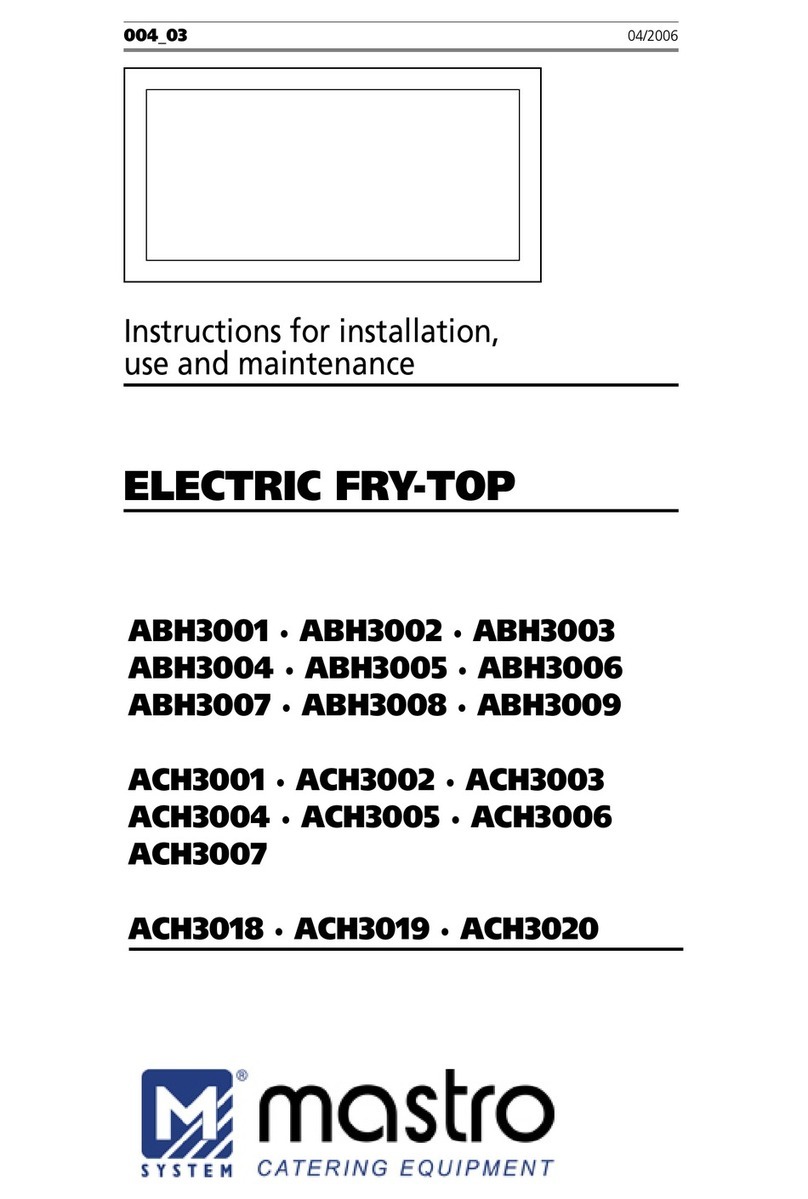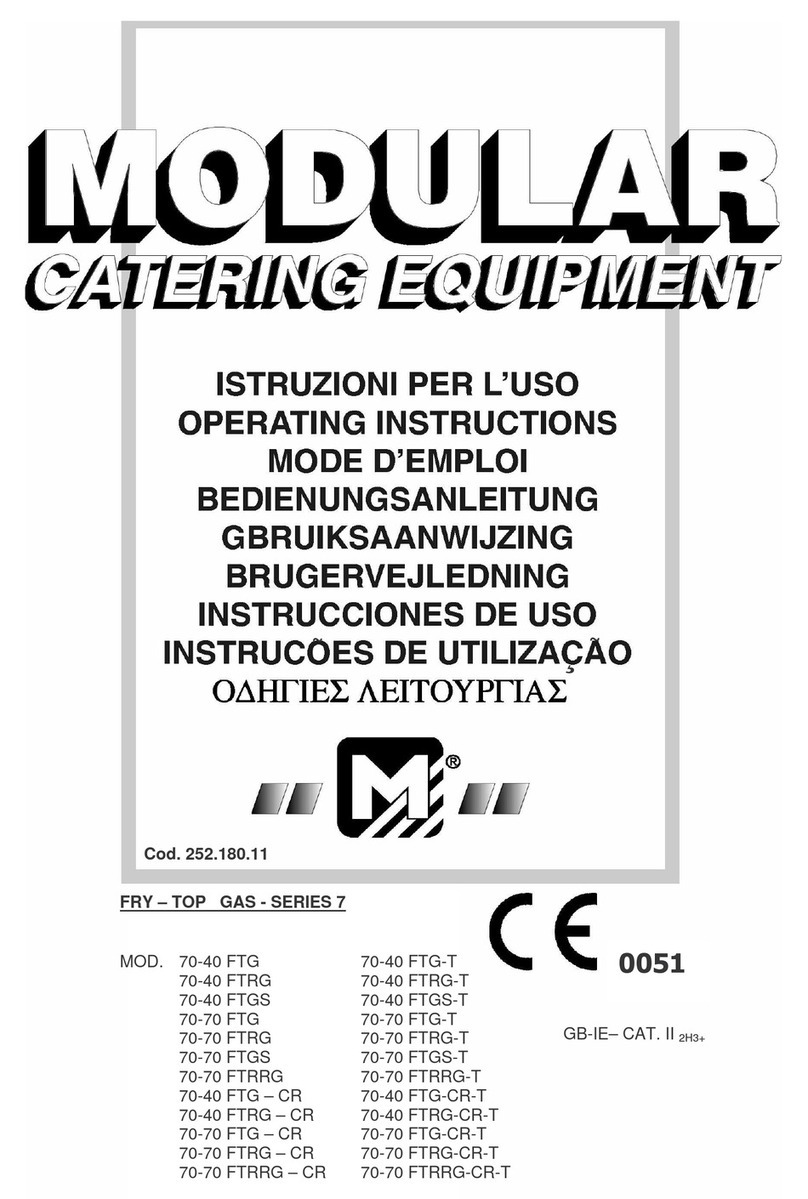
2.2.1 Electrical connection
1) The electric ranges are designed to operate off 400 VAC+3N voltage.
2) The connection to the mains must be carried out through a suitably rated trip switch which
has at least 3 mm between the contacts. Moreover, the mains voltage - when the
appliance is working - must not exceed ± 10% of the voltage value.
3) The power cable to connect the appliance to the mains must be at least equal to the
H05RN-F rubber insulated type, with cross section suitable to the max. power
consumption; therefore, its lowest cross section must comply to the data stated in the
electrical specifications table for each type of appliance.
4) On top appliances the cable inlet and the terminal block are on the rear side. To carry out
the connection, unscrew and remove the protective cover.
To gain access to the terminal block on ground appliances with an oven, the protective
cover on the left-hand side of the appliance must be removed; on the ranges with a
cabinet underneath the protective cover of the terminal block on the inner left-hand side
of the cabinet has to be removed; to carry out the connection, insert the cable through the
inlet gland and the cable-clamp and connect the wires to the relative binding posts.
5) The appliance must be provided with an efficient earth connection.
For this purpose, near the terminal block there is a binding post marked with the symbol
to which the earth wire (yellow-green) must to be connected.
The above-mentioned cable must be long enough so that – if the cable clamp loosens - it
can be stressed only after the feed wires have been disconnected .
NB: Earthing must be carried out according to the local standards and regulations in force.
2.2.1.1 Equipotential connection
When interconnecting multiple appliances together, the electric range must be included in an
equipotential system, whose efficiency has to be checked according to the rules in force. The
connection is on the rear panel in top appliances, and on the left-hand side of the bottom
frame in ground appliances, marked with “EQUIPOTENTIAL”.
Earth wires for appliances
Terminali cavetti di terra apparecchiatura
NB: The manufacturer declines all responsibility for damage resulting from non-
compliance with accident prevention rules as described above.
2.3 AVAILABLE SAFETY DEVICES
In addition to the thermostat the appliance is equipped with a temperature limit switch, which
switches off the oven in case of failure by the main thermostat. When failure occurs, contact
the after sales service.
